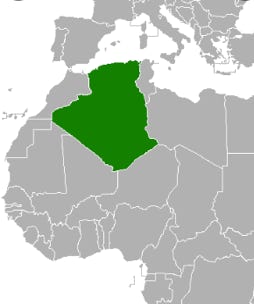

ANTT has been adopted Nationally by the Algerian Ministry for Health


Algeria is one of the largest countries in the African continent with a population of 43 million. The ASAP have been working with the Ministry of Health for the
last few years and are delighted to that ANTT has been officially adopted by the Algerian Ministry of Health as ‘The recommended aseptic technique of reference for all the country's health establishments’.
"During the preparation of our national IPC guidelines, a lack of visibility of the aseptic technique, a source of variability and imprecision in the recommendations, soon emerged as a crucial problem. The need for standardisation of aseptic technique soon became apparent, and ANTT was unanimously adopted as the ideal solution for the problem we were facing." Dr Iddir
Translating ANTT into French language?
Demonstrating the ANTT Practice Frameworks universal reach and easy understanding and application, the framework is translated comprehensively into French.
ANTT’s practice terms can be utilised in English in non-English language guidance, or translated. Here are the French translations for core ANTT practice terms:
Key-Part : Pièce-Clé
Key-Site : Site-Clé
Key-Part and Key-Site Protection:
Protection des Pièces-Clés et des Sites-Clés
General Aseptic Field: Champ Aseptique Général
Critical Aseptic Field: Champ Aseptique Critique
Micro Critical Aseptic Field: Micro-Champ Aseptique Critique

Why has Algeria chosen ANTT®?
This excerpt from the national guidelines above, independently demonstrates the appeal and utilisation of the ANTT® Clinical Practice Framework…
‘However, the teaching of aseptic technique in our country comes up against a lack of standardization, a source of ambiguity and variability in its understanding and application by professionals. This variability is the source of errors and compromises the achievement of effective asepsis. For this reason, we have adopted in this reference a standardized aseptic technique, in ANTT®, an original aseptic technique overseen by the Association for Safe Aseptic Practice (ASAP) which is working to establish it as an international standard and is currently adopted by many countries.
ANTT® is based on clear concepts and principles, combined with specific terminology that eliminates any ambiguity, thus providing caregivers with a common language and an identical understanding. It is accompanied by a set of Procedure Guidelines illustrating its application to the most common care in health establishments as well as in the context of home care.
The ANTT® is designed on a quality approach model, which allows healthcare establishments to implement it as part of a program to improve the quality and safety of care. As with the first standard, the presentation in the form of sheets and protocols allows easy use in initial (medical or paramedical) and continuing training as well as in the daily activity of caregivers. It’s adoption by health and training establishments will undoubtedly be a powerful lever for reducing the heavy burden of HAIs in our country.’
